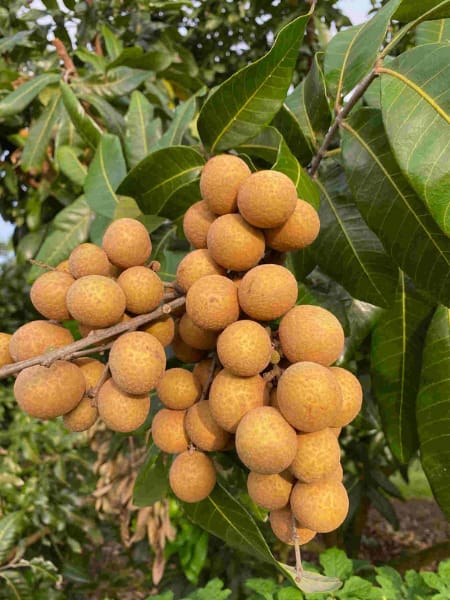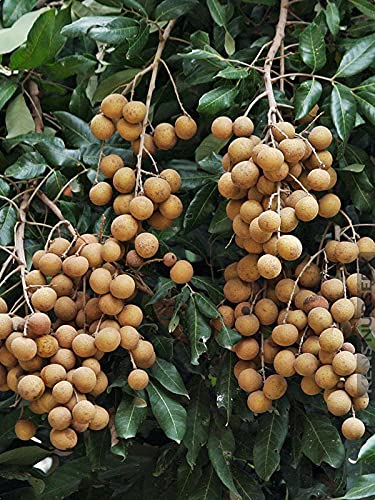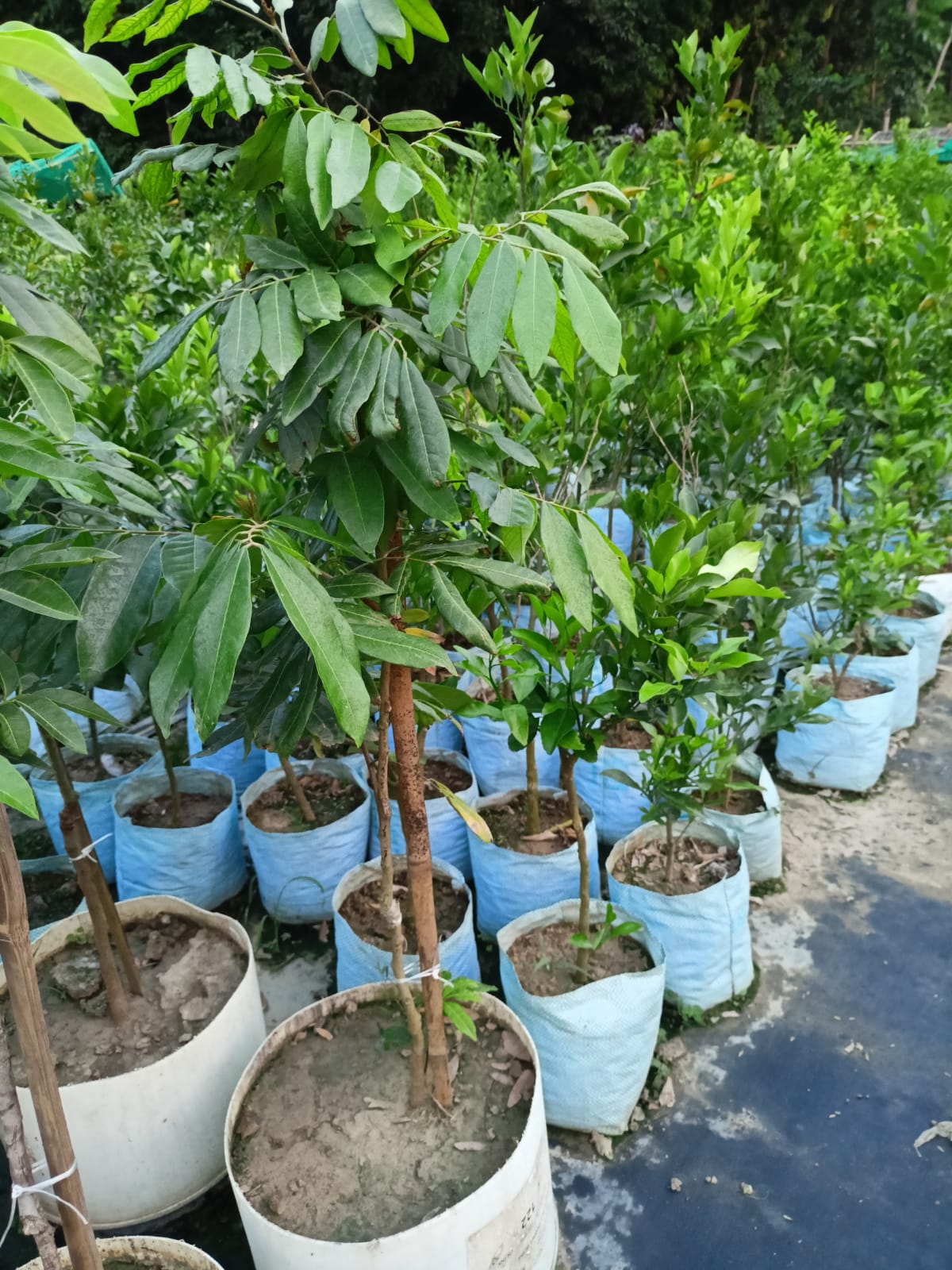Plantparadise
All season longan fruit trees
All season longan fruit trees
Couldn't load pickup availability
. INTRODUCTION :
The longan (Dimocarpus longan Lour.) is a highly esteemed fruit species in Asia. It grows satisfactorily in tropical and subtropical regions but is commercially grown in China, Thailand and Vietnam and to a limited scale in all South East Asian countries, India, Bangladesh, Sri Lanka, Australia and United States of America. Longan is originated in the mountainous region from Myanmar to Southern China. Longan is also known as the dragon’s eye because of the characteristic white eye-shaped mark on the pit.
COMPOSITION AND USES : Longan fruits are sweet with a pleasant flavour. The energy value is 458 kj/100 g pulp. The total carbohydrate content is 15-16 percent and sugar content is very high. The fruits are rich in vitamin C (ascorbic acid), vitamin B1, vitamin B2 and vitamin B6. The fruits are also rich in potassium, phosphorus and magnesium
Nutritional value of longan fruit: (per 100g of edible portion) Nutrients Quantity Nutrients Quantity Protein 1.31 g Calcium 1.0 mg Fat 0.1 g Iron 0.13 mg Total carbohydrates 15.14 g Magnesium 10.0 mg Crude Fibre 1.1 g Manganese 0.052 mg Ascorbic acid 84.0 mg Phosphorus 21.0 mg
CLIMATIC AND SOIL REQUIREMENTS Climate: Longan is a subtropical tree that grows well in the tropics but requires a short winter season for satisfactory flowering. A temperature of 15-22o C for 2-3 months during winter favours profuse flowering. However, longan is sensitive to frost and is likely to be killed or badly injured by prolonged low temperature. High night temperature (> 25°C) is detrimental for fruit development. Temperature above 40° C causes fruit damage and fruit drop. The best temperatures for flowering and fruit set are 20 - 25° C. Sufficient soil moisture is needed from fruit set until maturity. Suitable annual precipitation is about 1,500 mm. Drought during the flowering and fruit set period can reduce fruit productivity. However, excessive rainfall during flowering can result in poor pollination and increase in flower drop. Ample soil moisture is needed from fruit set until maturity. Longan is sensitive to wind damage and strong cyclonic winds can cause branch splitting and fruit shedding. Trees in China and Thailand are sometimes mounded after planting and/or branches supported by posts and bamboo pole fences to reduce wind damage, especially when the tree is carrying a heavy crop. The mounds are built up gradually over time around the trunk of the tree to about 1 m high
Soil: The preferred soils for longan cultivation are heavy, fine textured red loamy soils with high fertility and good water holding capacity. In general, wet lowlands or heavy clay soils should be avoided for longan cultivation. Longan thrives on rich sandy loams, it does well on soil with limestone content. The growth and flowering in moderately acid sandy soil is deficient, probably because shoot growth continues for long time. In Thailand, the soils yielding high fruit production are the heavy alluvial soils with access to water table. The roots grow down 2-4 m to the water table. In eastern Australia, the preferred soils for longan growing are heavy, fine textured soils and red loams with high fertility and good water holding capacity. In general, wet lowlands or heavy clay soils are best avoided. In India, the longan grows well in alluvial soils of north Bihar and West Bengal. The growth of tree is comparatively slow in acidic laterite soil of Kodagu region of Western Ghats.
Nutrition: Raw longan fruit is 83% water, 15% carbohydrates, 1% protein, and contains negligible fat. In a 100 gram reference amount, raw longan supplies 60 calories of food energy, 101% of the Daily Value (DV) of vitamin C, 12% DV of riboflavin, and no other micronutrients in appreciable quantities.
Traditional medicine:
Longan may be used in traditional Eastern folk medicine. Prior to the 1800s, longan was prevalent in Asia.
In ancient Vietnamese medicine, the "eye" of the longan seed was pressed against snakebites to absorb the venom. This was ineffective, but may still be used in the 21st century
Materials
Materials
Shipping & Returns
Shipping & Returns
Dimensions
Dimensions
Care Instructions
Care Instructions






